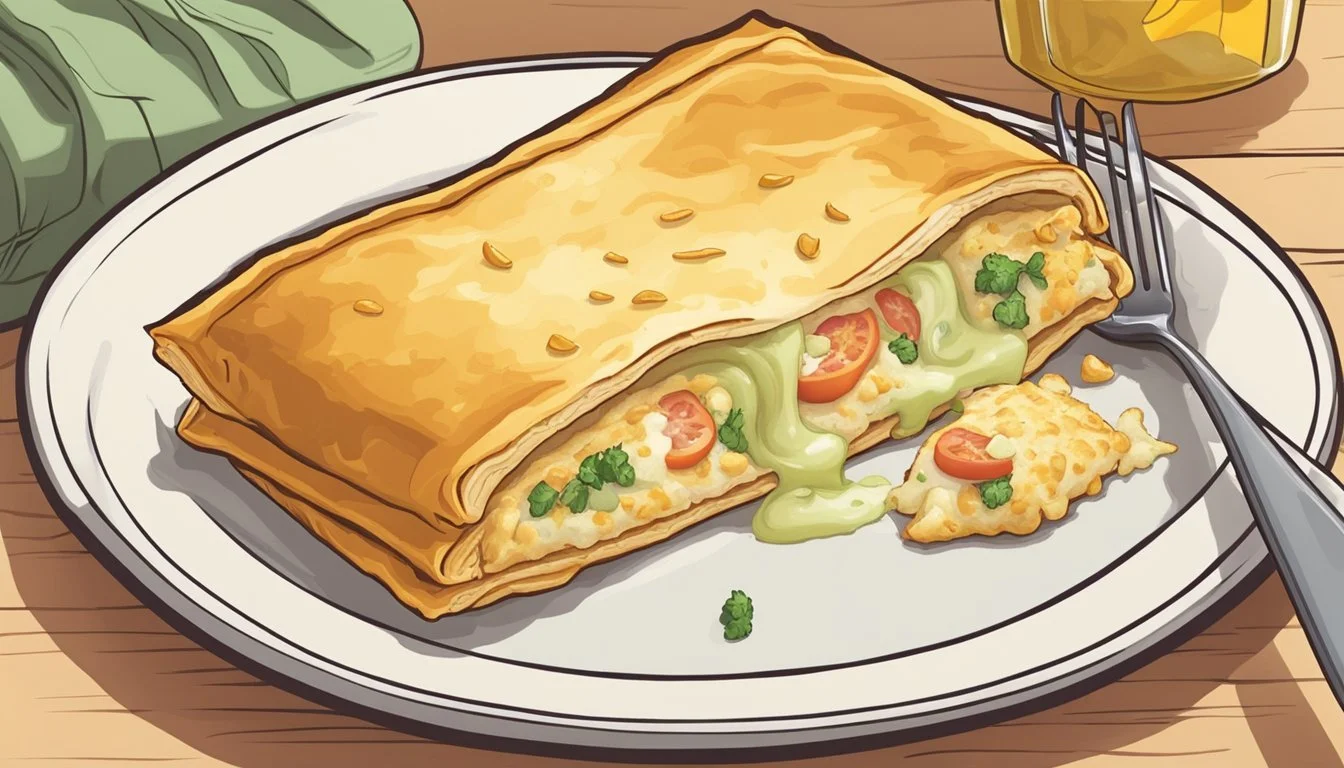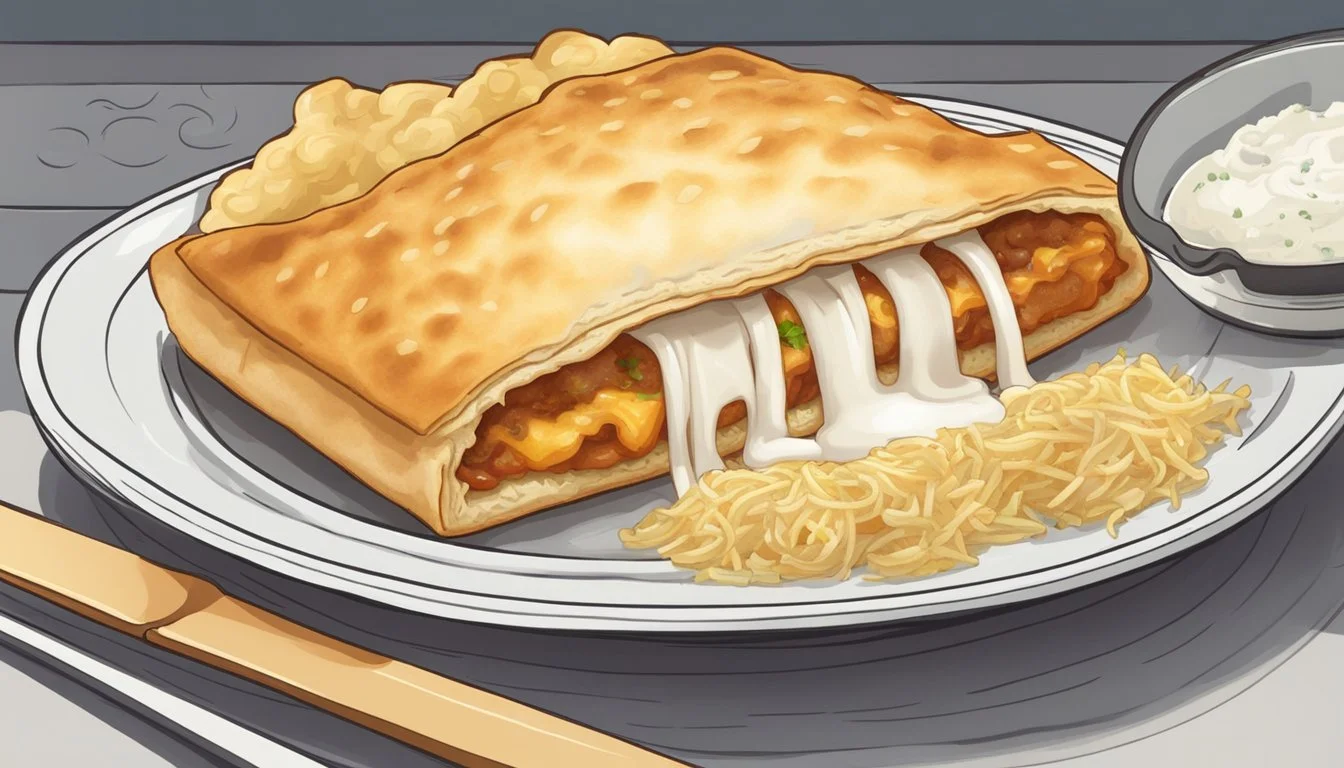How Do You Eat a Hot Pocket?
Quick and Safe Consumption Tips
Eating a Hot Pocket is straightforward yet requires some caution due to the high temperatures they can reach when cooked. Hot Pockets, a beloved quick meal option for many, particularly resonate with those who grew up in the '90s, finding their way into the routines of busy students and professionals. Designed to be convenient and easy-to-cook, Hot Pockets cater to a range of tastes with various fillings, from classic pepperoni to more inventive flavor combinations.
To enjoy a Hot Pocket, one must first cook it properly to ensure both food safety and the best eating experience. They should be heated until they reach an internal temperature of 165°F as recommended for safety. Depending on the method—microwave, oven, or skillet—the outer crust and filling can achieve varying degrees of texture and warmth. After cooking, a resting period is essential, allowing the heat to distribute evenly and reduce the risk of a burn from the filling's high temperature.
The final step is to consume the Hot Pocket carefully, starting with small bites to test the temperature, and avoiding rushing the process to prevent burns. It is a meal best enjoyed with patience, allowing the flavors in each bite to come through as it cools to a manageable temperature.
Types and Flavors
Hot Pockets come in an array of types and flavors, each wrapped in a crisp crust. Whether one prefers classic combinations or seeks out the specialty options, there is a Hot Pocket to suit each palate.
Classic Varieties
The Classic Hot Pockets lineup features time-tested favorites that echo familiar meals. Two prominent flavors in this category are:
Pepperoni Pizza with Garlic Buttery Seasoned Crust: A filling of pepperoni and cheese mirrors the iconic pizza flavor.
Five Cheese Pizza: Cheese lovers can bask in the blend of mozzarella, cheddar, provolone, parmesan, and Romano cheese, all encased in a crust.
Specialty Options
For those looking for a twist on the conventional or a taste of leaner choices, specialty options expand the Hot Pockets menu:
Lean Pockets: A healthier alternative like the Lean Pockets line includes options such as Philly Steak and Cheese and Chicken Jalapeño and Cheese, which offer bold flavors with reduced fat content.
Philly Steak & Cheese: This variety translates the classic cheesesteak into a convenient, handheld form, complementing the steak with melted cheese and sweet roasted peppers.
Preparation Basics
Preparing a Hot Pocket properly is key to achieving a crispy crust and evenly cooked filling. Cooking times and temperatures vary depending on the method and cooking appliance.
Microwave Instructions
To microwave a Hot Pocket, remove it from the packaging and place it into the crisping sleeve. Set it on a microwave-safe plate. The cooking time typically ranges from 2 to 4 minutes depending on the microwave's wattage. It is essential to ensure the internal temperature reaches 165°F (74°C) to be safely consumed.
1100-watt microwave: Cook on high for 2 minutes.
Lower wattage/compact microwave: Cook on high for up to 3 minutes.
Oven Cooking
For oven cooking, preheat the oven to 400°F (204°C). Remove the Hot Pocket from its packaging, but do not use the crisping sleeve. Place the Hot Pocket on a baking sheet and bake for about 28 minutes, turning it over halfway through to ensure it cooks evenly. This method helps achieve a crispy crust.
Alternative Methods
Skillet: Cook the Hot Pocket in a pan over medium-high heat for 3 minutes per side until it turns golden brown.
Toaster Oven: Preheat to 425°F (220°C) and bake for a shorter duration than a conventional oven, usually around 14 to 16 minutes.
Air Fryer: An air fryer can also be used to cook a Hot Pocket. Although times may vary, start with cooking at 380°F (193°C) for about 13-15 minutes, checking intermittently for a crispy crust.
Safety and Quality
Eating a Hot Pocket safely means ensuring it's fully cooked to the right temperature and understanding the instructions on the packaging. Proper handling and cooking are essential for food safety and quality.
Achieving the Right Temperature
A properly cooked Hot Pocket reaches an internal temperature of 165°F (74°C), which is the standard for safely cooked poultry. Consumers should use a food thermometer to verify that this temperature has been attained, thereby killing any potential harmful bacteria. Different cooking methods require varying times and temperatures to achieve this; for instance:
Microwave: Typically requires around two minutes, but varies by microwave wattage and if the Hot Pocket has thawed.
Oven: Preheat to 400°F (204°C) and bake for about 14 minutes, turning the Hot Pocket halfway through.
To cook evenly, turning the product midway through the cooking is recommended, especially when using an oven or skillet.
Understanding Packaging and Labels
Reading and following the package instructions are vital to the safe consumption of frozen Hot Pockets. Manufacturers provide:
Cooking Instructions: A step-by-step guide on how to cook the product from frozen to ensure it reaches the appropriate temperature.
Storage Guidelines: Recommendations on how to store the item before and after opening to maintain its quality.
Labels on the packaging also provide important information about the expiration date, which should always be checked to ensure the Hot Pocket has not gone past its prime consumption period. Following these practices ensures that Hot Pockets are safe to eat and of the best quality.
Culinary Techniques
Proper technique is essential for achieving the right texture and temperature in a Hot Pocket. Following specific steps can ensure that its crust becomes crispy and the filling heats evenly without sogginess.
Ensuring a Crispy Crust
To achieve a crispy crust on a Hot Pocket, one must consider the method of reheating. Using an oven typically yields the best results. Heat the oven to 400°F (204°C) and place the unwrapped Hot Pocket on a baking sheet, preferably without a crisping sleeve for even heating. Cook for approximately 14 minutes, turning the Hot Pocket over at the halfway point to promote even cooking and crispiness.
Preventing Sogginess
The key factor in preventing sogginess is the management of moisture during the cooking process. If using a microwave, opt for a microwave-safe plate and employ the microwave crisping sleeve to help absorb moisture. For ovens and toaster ovens, ensure that the Hot Pocket is not wrapped in any moisture-retentive materials and is turned over halfway through cooking. Reaching an internal temperature of 165°F (74°C) confirms the filling is heated through.
Multiple Hot Pockets Management
When cooking multiple Hot Pockets, maintain adequate space between them on the baking sheet to allow for proper heat circulation. In the microwave, limiting the number to two per cycle and adjusting the cooking time incrementally is advised, as increased quantity may require additional time. In all cases, it is critical to monitor the temperature of each Hot Pocket to ensure they achieve the desired crispiness and are heated uniformly.
Nutritional Information
When considering the nutritional aspects of Hot Pockets, one should pay close attention to their caloric content, the balance of protein and fat, as well as the amount of sodium each serving contains.
Caloric Content
Hot Pockets are a high-calorie food item generally considered a quick meal or snack. Caloric content varies by flavor and size, but on average:
A Ham 'n Cheese Hot Pocket contains approximately 308.5 calories per piece.
Breakfast varieties typically range from 280 to 300 calories per serving.
Some Hot Pockets can contain as many as 580 calories per serving, which is a significant portion of an adult's recommended daily caloric intake.
Protein and Fat Content
Protein is an essential nutrient, and Hot Pockets offer a moderate amount in each serving, with variations depending on the type:
Breakfast flavors generally include 10 to 11 grams of protein.
Hot Pockets also contain fat content, where a single serving can have between 10 to 25 grams of fat, 12 grams of that being saturated fat and 0.5 grams of trans fat included in some options.
Sodium Levels
Sodium levels in Hot Pockets should be monitored, especially for those watching their salt intake:
A standard Hot Pocket can contain about 645.1 mg of sodium.
This concentration of salt can be quite substantial, sometimes reaching nearly 30% of the recommended daily limit for adults.
Serving Suggestions
When serving Hot Pockets, one should always consider the taste and texture, ensuring they are warm yet cool enough to eat comfortably. It's best presented on a plate, with possible accompaniments to enhance the flavor.
Proper Cooling
Hot Pockets must be allowed to cool after heating to prevent burns and ensure the filling's temperature is even. It's recommended to let the sandwich rest for two minutes before consumption, as this allows the heat to distribute evenly, making it safer to eat and more enjoyable as the texture stabilizes.
Accompaniments
To complement a Hot Pocket, consider pairing with simple sides or sauces:
Sauces: A dash of hot sauce can enhance the flavor.
Sides: Light sides such as a salad or vegetable sticks can balance the meal.
Choose sides and sauces that do not overpower the Hot Pocket's taste but rather enhance the overall eating experience.
Storage Tips
When dealing with frozen foods like HOT POCKETS® sandwiches, proper storage is key to maintaining freshness and ensuring safety. One should store HOT POCKETS® in the freezer until they are ready to be cooked. They must remain frozen to prevent the growth of harmful bacteria, as thawing and refreezing can compromise the safety and quality of the food.
In the fridge: If one has leftover HOT POCKETS®, they can be refrigerated for a short period. Once cooked, it's important they cool down before refrigerating to maintain the safe temperature of other stored items. Leftovers should be consumed within 3-4 days.
Here are some additional storage tips:
Before cooking: Store unopened HOT POCKETS® in the coldest part of the freezer.
After cooking: Allow to cool, then wrap in aluminum foil or plastic wrap before placing in the fridge.
Do not reheat and refreeze: Quality and safety may be compromised.
Remember:
Action Temperature Time Frame Storing Frozen Keep at 0°F (-18°C) or below Until 'Best By' date Refrigerating Keep at 34-40°F (1-4°C) 3-4 days for leftovers
It's paramount to always check the packaging for specific storage instructions tailored to the product to ensure one is following the guidelines set by the manufacturer. By adhering to these straightforward yet essential storage tips, consumers can enjoy HOT POCKETS® at their best quality and taste.
Common Pitfalls
Eating Hot Pockets comes with its own set of challenges, from achieving the perfect doneness to maintaining the integrity of the filling. Paying attention to proper preparation methods can help avoid these issues.
Avoiding Undercooking
Undercooking a Hot Pocket can result in a poor texture and cooler internal temperature, compromising both taste and food safety. To ensure it's fully cooked:
Check the internal temperature: It should reach at least 165°F (74°C) to ensure the Hot Pocket is safe to eat.
Visual cues: The crust should be golden brown, indicating that it's likely done.
Preventing Overcooking
Overcooking can lead to a crust that's too hard and a filling that's lost its gooey quality. To prevent overcooking:
Timed Cooking: Heat the Hot Pocket for the precise amount of time recommended by the packaging instructions for your microwave wattage.
Crispiness Check: The crust should be crispy, but not hard or burnt.
Combating Cheese Leakage
Cheese leakage can result in a less enjoyable eating experience and a mess. To combat this:
Pre-heating: Warm up the microwave or oven before cooking to ensure even heating.
Turn halfway: In ovens, flipping the Hot Pocket midway through cooking can promote even distribution of the filling and prevent cheese from spilling out.







